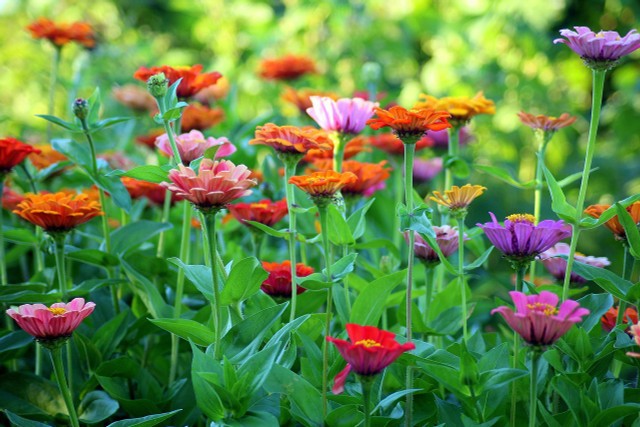Zinnia not only produces very beautiful flowers, but is also one of the most important plants for insects. How to grow them in the garden and what ecological value the insect-friendly flowers have, you can read here.
Zinnia: food for insects
Zinnia (also zinnia) is originally from Central America and is a popular ornamental plant in our country. It belongs to the genus of composite plants and blooms from early summer to autumn. The flowers of the zinnia come in yellow, white, orange and red and attract numerous insects.
According to NABU, zinnia is one of the important nectar plants for butterflies. Therefore, the cultivation of zinnia in the home garden also has its ecological sense. Butterflies and bees suck the nectar from the inflorescences and carry the pollen to the next flowers.
This cycle of life is very important for nature. Plants and insects in this case benefit from each other, live in symbiosis.
Zinnia: cultivation and care

Sow Zinnia seeds in the spring around February/March. You can buy them in your local garden store or on the Internet. You can grow the zinnia indoors on the windowsill, because outside it is still too cold for the cold-sensitive zinnia. In mid-May you can plant them in your garden without any problems.
Make sure that the soil is well-drained and moist. The location in the garden should be well illuminated by the sun, as the zinnia loves warmth. So avoid placing the plants near plants that tower over them. In the shade, the zinnia can not develop.
For optimal rooting of the zinnia you should water the plants regularly during the first weeks. Once the zinnia is well established in the soil, you can reduce this significantly. Here are a few more tips for caring for zinnia:
- You only need to water fully developed flowers during dry spells in the summer.
- During the flowering period, starting in June, you can fertilize the plants every 14 days. Use organic fertilizer if possible.
- Long flower stems should be supported with a stick to prevent them from collapsing.
As you can see, zinnia is not very demanding in terms of cultivation and care, and at the same time it is very valuable for insects. The flowers may also look good in your garden. Just give it a try.

